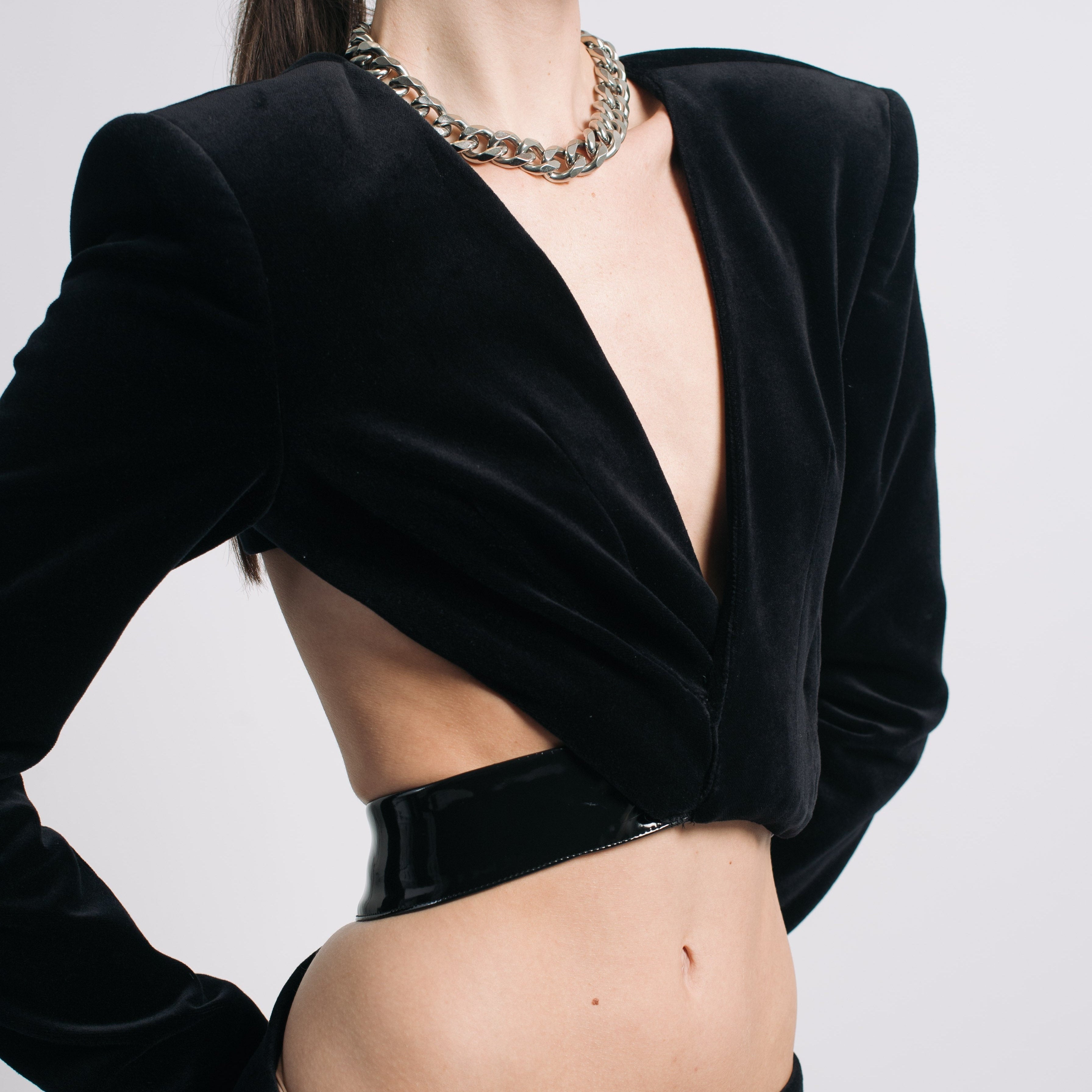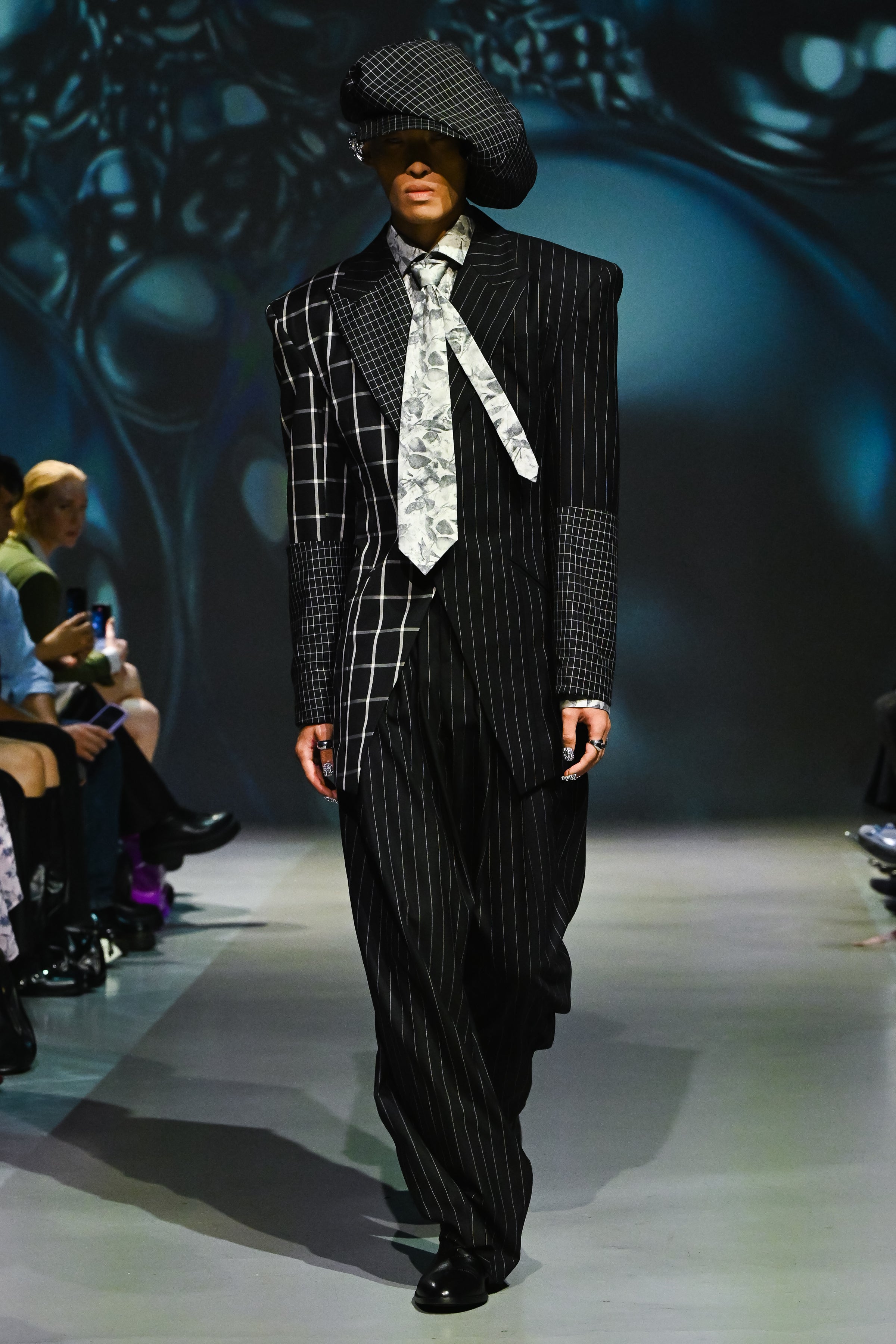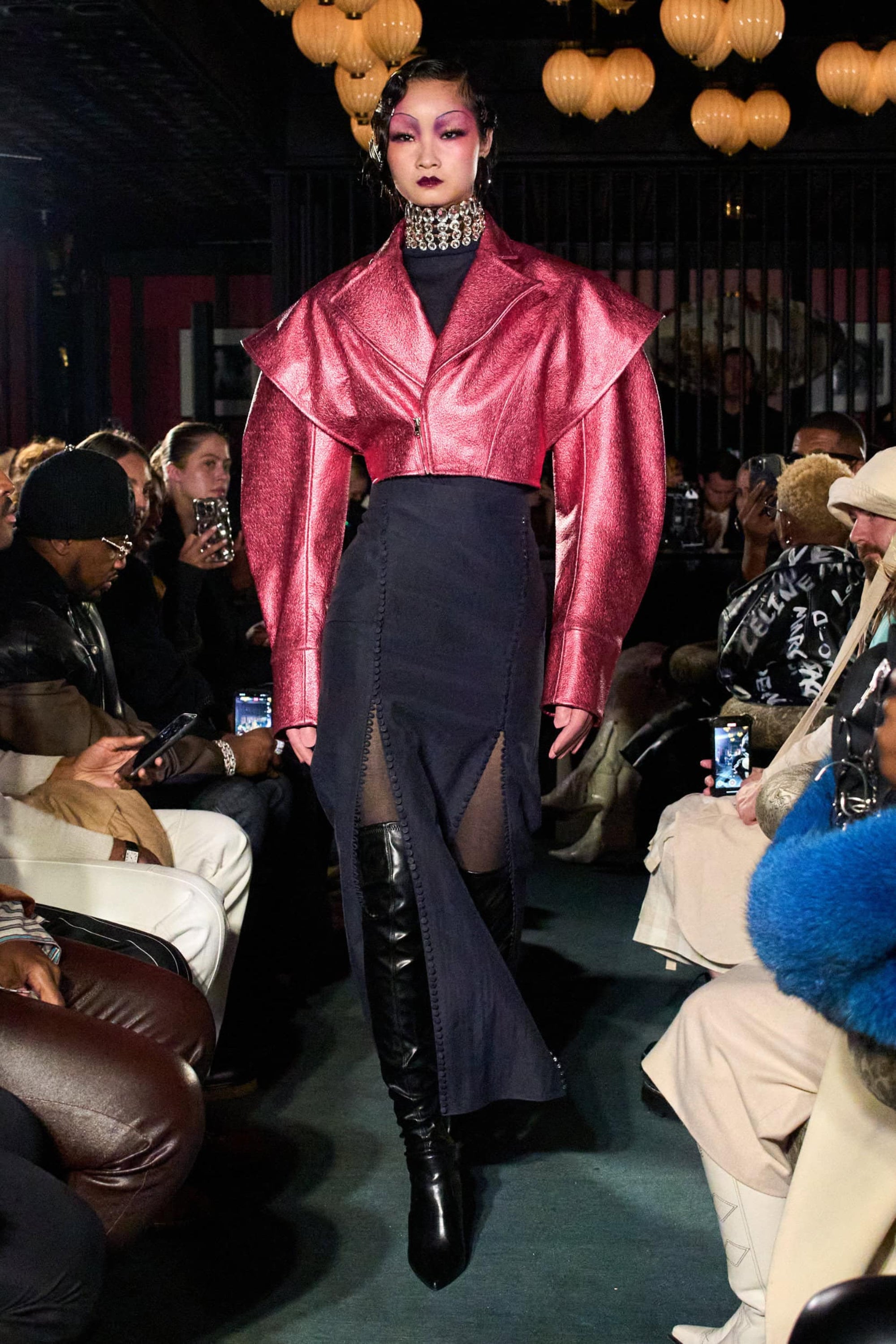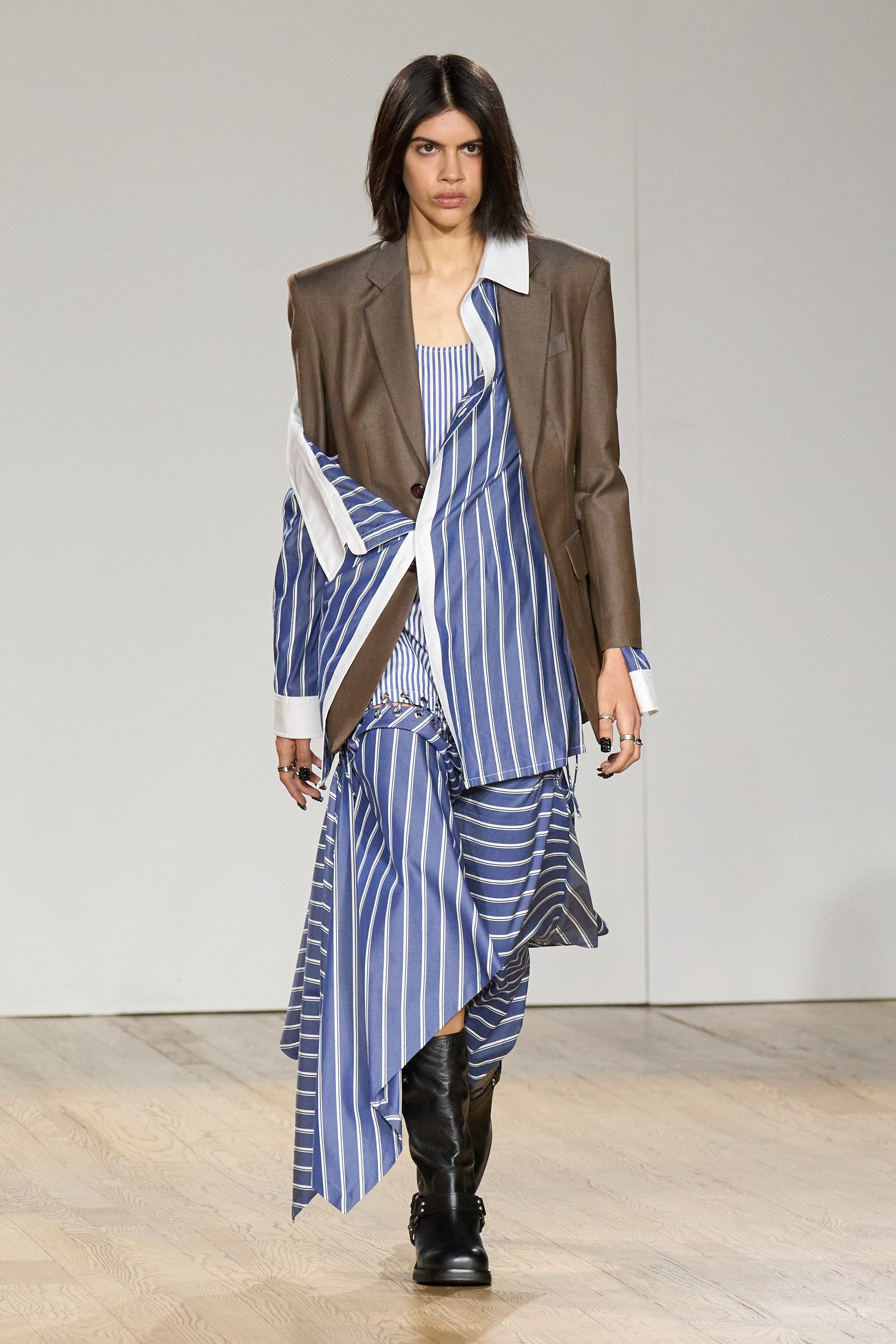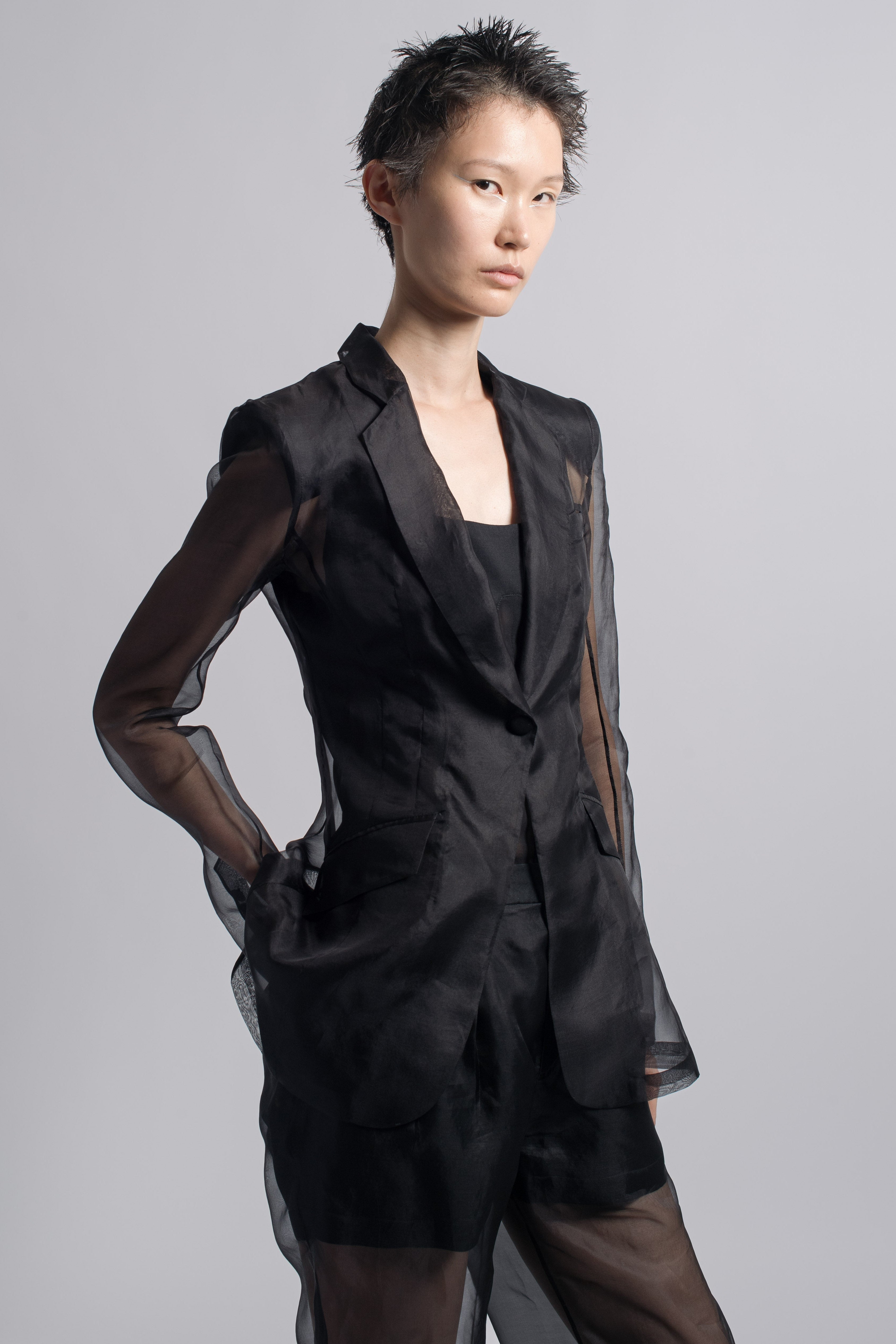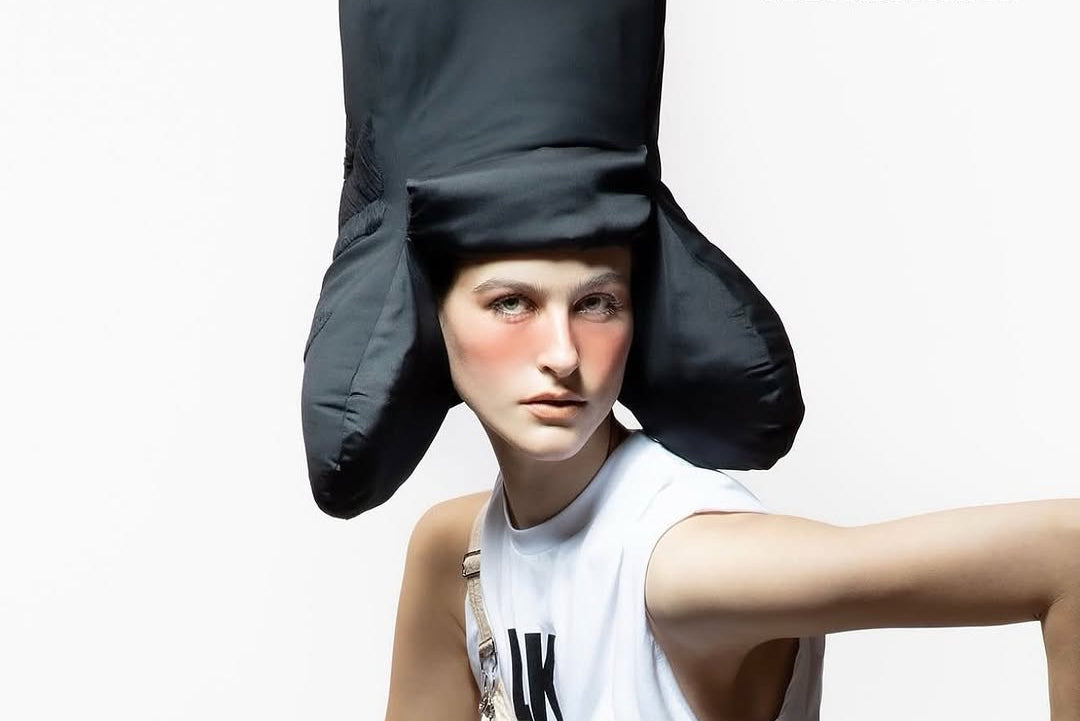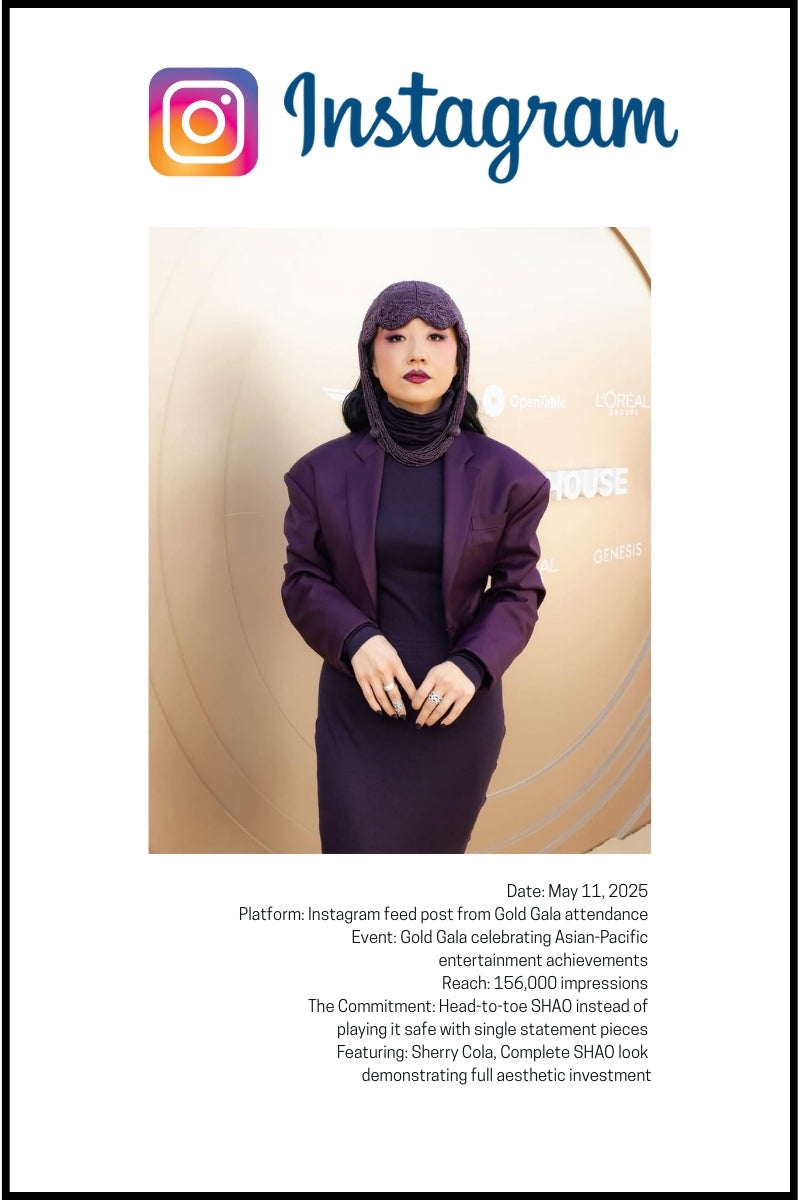When Aubergine Becomes Power Language
Lilly Singh's Instagram documentation of her SHAO aubergine blazer moment operates like the visual equivalent of The Devil Wears Prada if Miranda Priestly actually grew up watching Fresh Prince reruns—sophisticated enough to command corner office respect while maintaining the cultural fluency that separates authentic authority from executive theater.
The setup reads like corporate America's fever dream: floor-to-ceiling windows, city skyline backdrop, conference table with nameplate reading "Chief Hype Officer." Singh positioned in SHAO's aubergine blazer set, Wilson basketball casually in hand, looking like she could negotiate network deals before lunch and still make it to pickup games in Prospect Park by sunset. It's the kind of cultural navigation that would make David Stern's NBA dress code architects break out in cold sweats.
But here's where Singh's styling choices transcend typical celebrity corporate cosplay: the aubergine blazer's construction reads like technical fashion vocabulary spoken fluently rather than memorized from business casual guidebooks. Structured shoulders that maintain authority without broadcasting insecurity. Fabric weight substantial enough to withstand boardroom air conditioning battles while remaining breathable during twelve-hour deal negotiations. The matching skirt creates visual conversation between traditional suiting codes and contemporary power dynamics that don't require masculine performance for credibility.

The Wilson basketball functions as cultural authenticity device rather than random prop—connecting entertainment industry street credibility with corporate authority through shared vocabulary that acknowledges how power actually circulates in contemporary business culture. Singh holding sports equipment while wearing sophisticated tailoring creates the kind of cognitive dissonance that separates genuine cultural synthesis from manufactured executive branding.
The "Chief Hype Officer" title itself reveals understanding of how contemporary corporate culture operates through personality rather than institutional performance. Traditional executive roles assume authority emerges from hierarchy, but Singh's positioning suggests power derives from cultural fluency and genuine influence rather than corner office real estate. The SHAO blazer becomes translation device—allowing authentic self-expression within corporate frameworks that usually demand cultural assimilation.
Singh's dual post strategy demonstrates evolved celebrity communication where narrative construction matters more than simple outfit documentation. The aubergine blazer appears across multiple contexts—conference room authority, casual basketball confidence, tie-adjustment precision—showing how contemporary professional identity operates through authentic style rather than seasonal costume changes.
The Aubergine Theory of Corporate Rebellion
Corporate fashion operates like Windows Vista—technically functional while missing the cultural intelligence that would make it actually useful. Most celebrity "executive" styling defaults to black-and-white suiting with the same creative vision that convinced record industry executives that Napster was temporary inconvenience rather than permanent industry evolution. Singh's aubergine blazer choice demonstrates what happens when someone understands that authentic corporate authority emerges from cultural confidence rather than institutional costume compliance.
The mathematics of power dressing reveal assumptions about professional credibility that haven't evolved since Working Girl convinced audiences that shoulder pads equaled executive competence. Traditional corporate styling operates through symbolic uniform rather than functional intelligence—the sartorial equivalent of assuming corner office placement guarantees actual influence. Singh's approach disrupts this performance by prioritizing cultural authenticity over corporate theater, like choosing bodega coffee over Starbucks not from budget constraints but genuine taste preference.
Corporate America's relationship with color psychology reflects the same institutional thinking that made MySpace executives believe Facebook was college trend rather than social media evolution. Traditional power dressing defaults to neutral tones under assumption that authority requires visual conformity, but Singh's aubergine choice operates through different logic entirely. aubergine signals creative industry credibility while maintaining corporate competence—functionality that bridges entertainment authenticity with executive authority without requiring cultural compromise.
The technical aspects of corporate-appropriate tailoring for entertainment industry figures reveal complexity that most celebrity styling approaches handle with all the subtlety of Succession episodes—technically accurate while missing actual power dynamics. Singh's SHAO blazer needed to photograph authoritatively for social media documentation while maintaining functionality during extended business interactions. The construction serves dual masters: Instagram aesthetic demands and boardroom performance requirements that separate genuine fashion partnership from typical celebrity styling theater.
Singh's career trajectory makes her corporate fashion choices particularly loaded with cultural significance. YouTube creator to network television host to entertainment industry executive represents professional evolution that requires fashion approach honoring creative origins while reflecting elevated industry status. The aubergine blazer navigates this complexity through sophisticated construction that reads as elevated streetwear rather than traditional corporate uniform—like wearing vintage Jordans with tailored suits because both work and the combination says something about cultural fluency that pure luxury brands can't communicate.
The striped tie detail reveals Singh's understanding of menswear authority codes while asserting feminine power through contemporary interpretation. Rather than appropriating masculine signaling, she adapts traditional elements through personal style lens that maintains professional credibility while expressing authentic identity. The tie becomes cultural translation tool rather than costume element—acknowledging power dressing history while refusing to be constrained by outdated performance requirements.
Contemporary entertainment industry executives face fashion challenges that traditional corporate styling approaches handle like trying to run current software on dial-up connections—technically possible but missing the point entirely. Singh's "Chief Hype Officer" role requires garments that function within corporate environments while maintaining entertainment industry authenticity. The SHAO blazer succeeds because it emerges from genuine professional need rather than manufactured promotional opportunity.
The Wilson basketball prop operates through cultural logic that corporate fashion discourse rarely acknowledges. Rather than random sports equipment, the basketball functions as authenticity signal connecting entertainment industry credibility with executive authority through shared cultural vocabulary. Singh's casual confidence holding sports equipment while wearing sophisticated tailoring creates visual dialogue between different professional spheres that most celebrity corporate styling approaches through segregation rather than integration.
Fashion's role in celebrity professional identity construction increasingly functions like cultural GPS—helping navigate between different industry expectations while maintaining authentic direction. Singh's corporate styling requires balancing entertainment industry credibility with executive authority, creating challenges that demand sophisticated understanding of cultural signaling rather than simple aesthetic preference. The aubergine blazer serves as cultural bridge rather than costume change.
The dual Instagram post strategy reflects Singh's understanding that contemporary corporate culture operates through authentic storytelling rather than traditional executive presentation. Her approach emphasizes professional identity themes while showcasing fashion's role in cultural translation between entertainment and corporate contexts. The SHAO blazer appears naturally integrated into broader narrative about authentic authority rather than focusing on garment details—like documenting actual work process rather than performing productivity for social media consumption.
Corporate culture's integration of entertainment industry elements creates unique fashion requirements that traditional executive styling approaches accommodate like trying to fit iPhone chargers into cassette players—mechanically impossible and conceptually backwards. Singh's positioning requires garments that serve genuine professional needs while maintaining cultural credibility across different contexts. The aubergine blazer addresses these challenges through construction that honors both requirements without compromise.
The broader implications of Singh's corporate fashion choices extend beyond individual styling decisions to questions about professional representation within entertainment industry leadership. Her approach demonstrates how contemporary executives can maintain creative industry authenticity while exercising corporate authority through genuine self-expression rather than institutional costume adherence. It's professional identity construction that acknowledges cultural complexity rather than defaulting to simplified authority performance.
Singh's positioning within corporate space—leaning over conference tables, adjusting ties with natural confidence—suggests ownership rather than aspiration. The SHAO blazer supports this authenticity through construction that maintains sophistication while allowing genuine comfort and natural movement. It's corporate fashion that serves authentic professional identity rather than manufactured executive theater, like wearing clothes that actually fit your life rather than wearing life that fits prescribed clothes.
The economics of celebrity corporate fashion reflect broader shifts in entertainment industry professional dynamics that most fashion coverage approaches like sports commentators calling chess matches—technically accurate terminology applied to fundamentally different game. Singh's investment in sophisticated tailoring for executive roles signals understanding that contemporary corporate culture operates through authentic personality rather than traditional authority performance. The SHAO blazer represents this evolution through construction that serves genuine professional needs rather than simple photo opportunities.
When entertainment industry executives make fashion choices for corporate contexts, they're not just selecting professional attire—they're communicating cultural values and professional identity through clothing decisions that carry weight beyond immediate visual impact. Singh's SHAO blazer choice represents evolution in celebrity corporate fashion where authentic professional identity transcends traditional executive theater to create genuine cultural authority through sophisticated tailoring that honors multiple traditions simultaneously.
The revolution in celebrity corporate fashion happens in actual boardrooms and authentic social media documentation rather than manufactured red carpet moments. Sometimes it wears aubergine blazers designed with technical precision, chosen for cultural authenticity rather than traditional authority signaling, documented through social media platforms that prioritize genuine narrative over promotional content.
Very authentic corporate rebellion. Very contemporary power dynamics. Very right now, when entertainment industry executives navigate authority through fashion that bridges cultural authenticity with professional credibility without requiring compromise on either front—creating new models for what executive presence actually looks like when it's not performing institutional expectations but expressing genuine cultural intelligence through sophisticated style choices.
But maybe the real question isn't whether Singh's aubergine blazer represents evolved corporate fashion, but whether corporate America is sophisticated enough to recognize authentic authority when it shows up wearing colors that don't appear in traditional power dressing manuals. Some conversations require aubergine blazers to happen at all.
